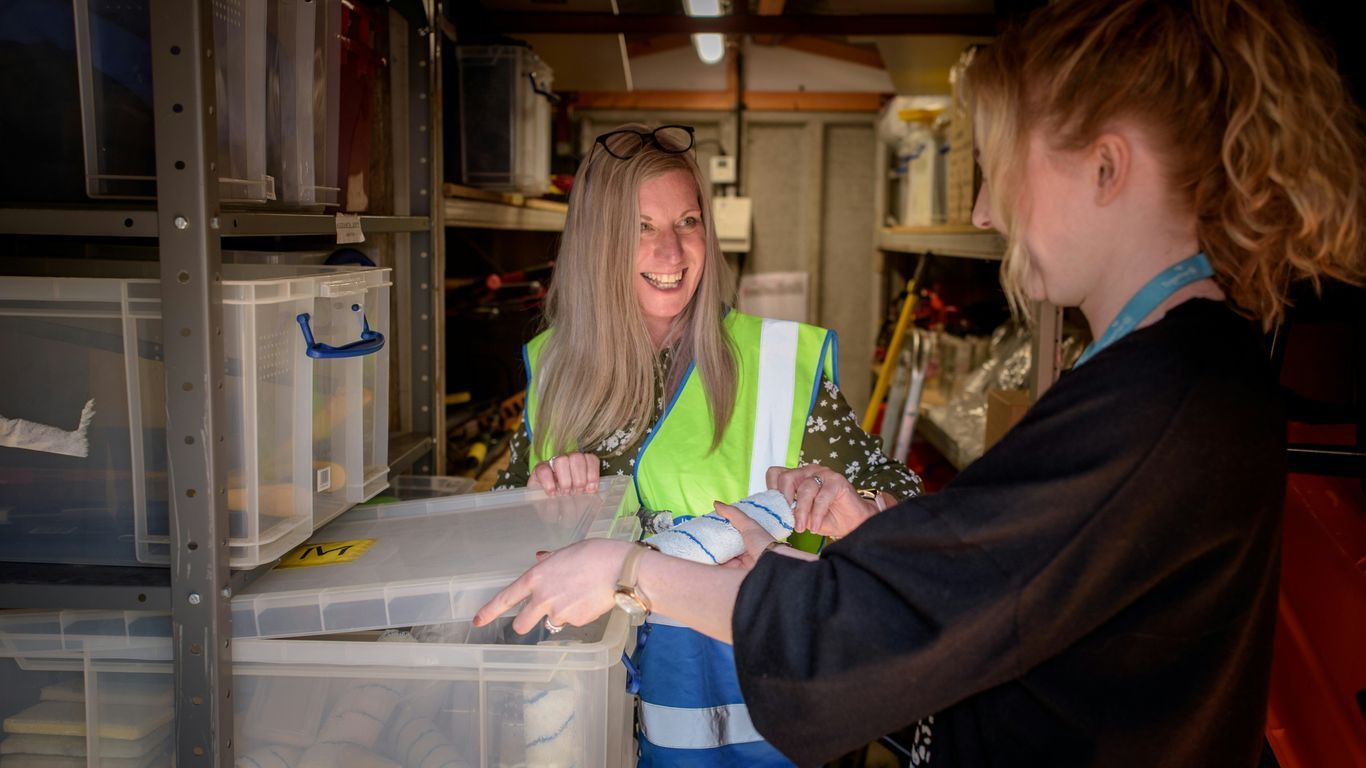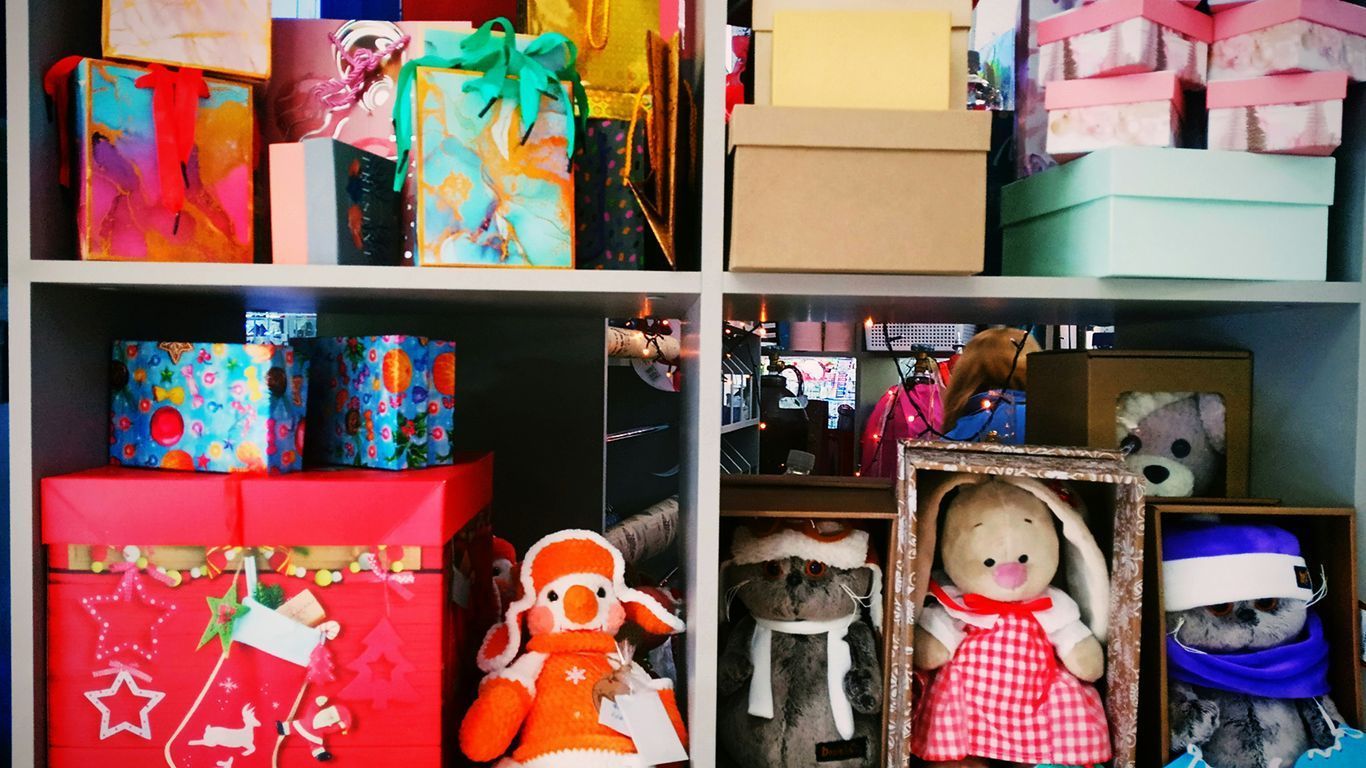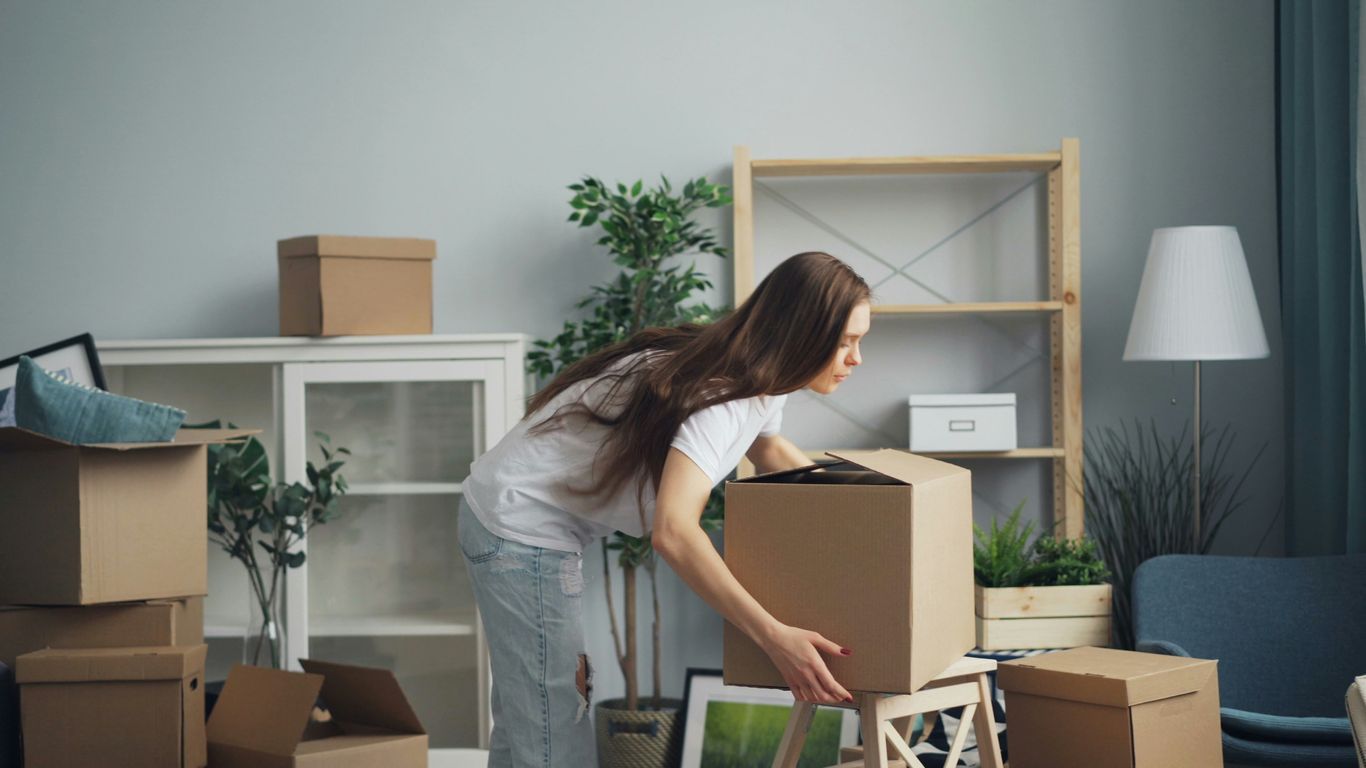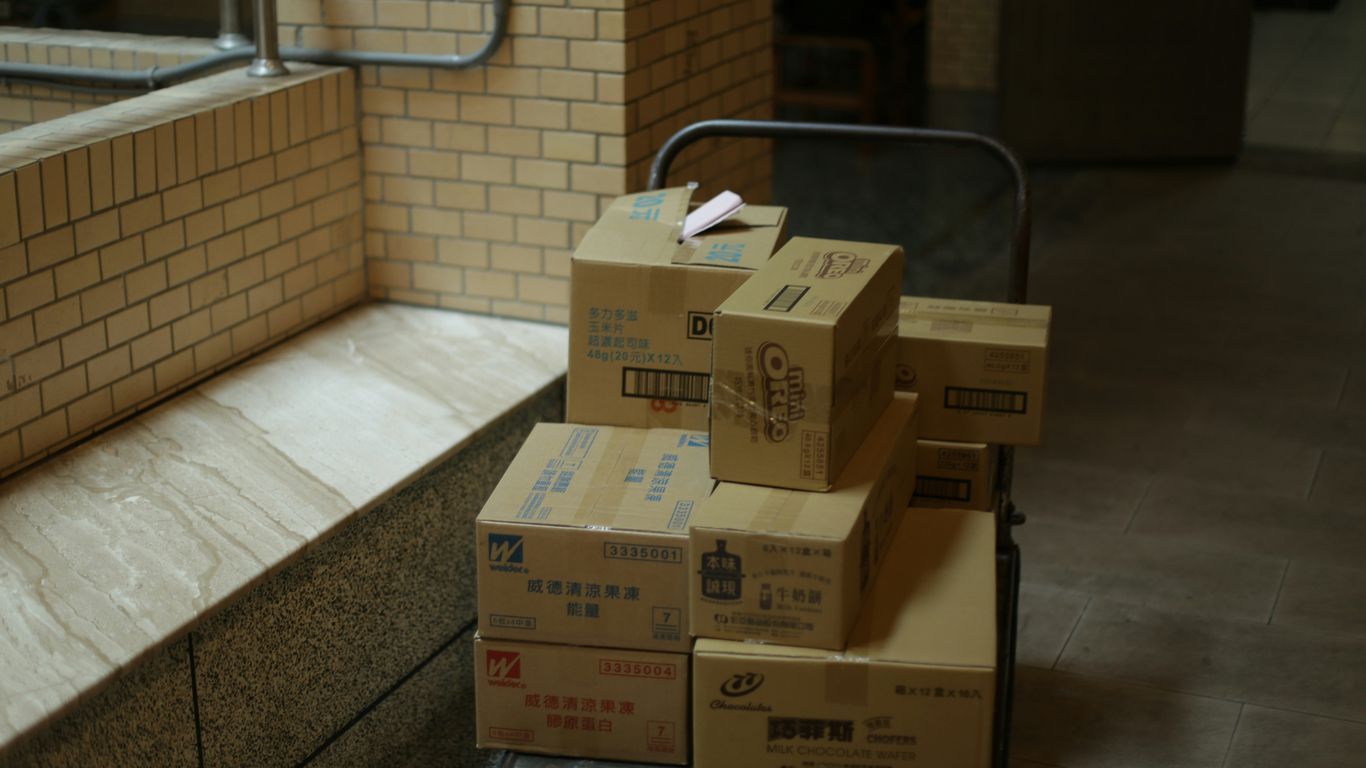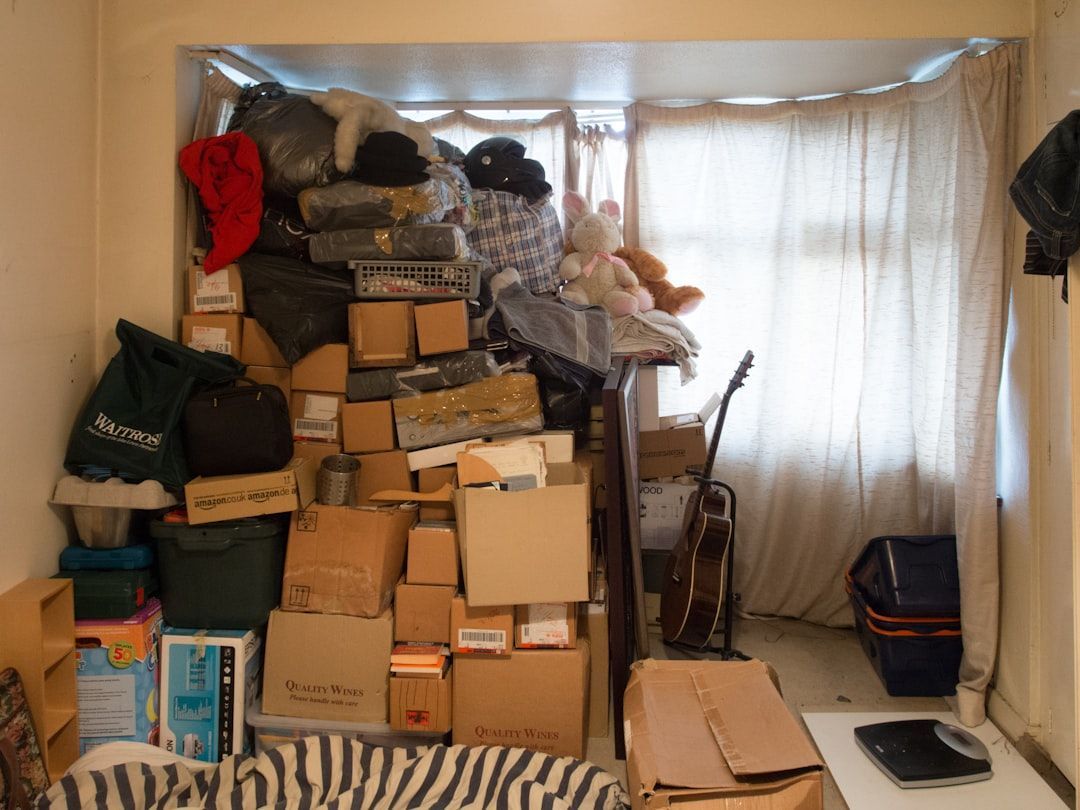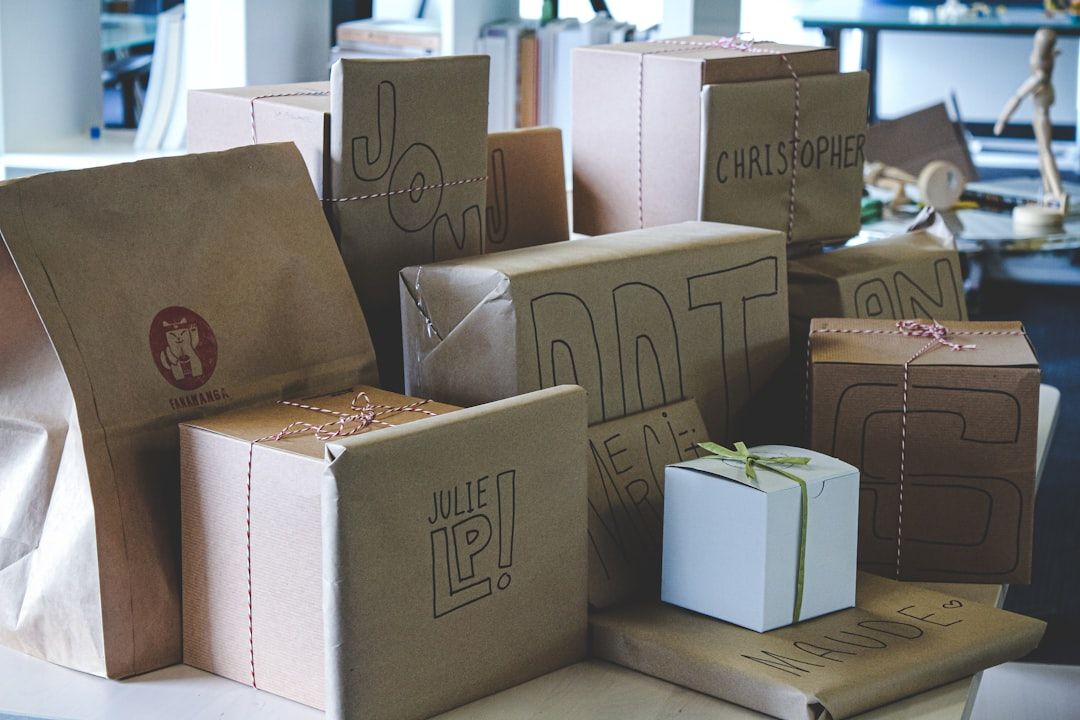Smart Ways to Maximize Vertical Space in Your Storage Unit
So, you've got a storage unit, and it feels like it's overflowing already? It's a common problem, trying to fit everything in without it turning into a jumbled mess. But don't worry, there are some pretty simple ways to get more from your space. We're talking about making that unit work harder for you, so you can find things when you need them and not feel like you're wrestling an octopus every time you go in. Let's look at some smart maximize storage unit space tips.
Key Takeaways
- Plan your storage unit layout before you start loading anything. Sketching out where boxes and items will go can help you organize better and might even show you that you need less space than you thought.
- Use the height of your unit. Stacking items and using shelving units can free up floor space, making it easier to move around and access your belongings.
- Choose uniform-sized storage bins and boxes. This makes stacking much easier and more stable, preventing damage and keeping your unit looking neater.
- Dismantle larger furniture pieces before storing them. Packing them flat takes up less room and makes them easier to fit into your unit.
- Label everything clearly on the side of the box. Consider color-coding labels by category or creating a simple map of your unit to easily find items later on.
Maximize Storage Unit Space Tips
When you're trying to fit more into your storage unit, it's easy to just start shoving things in. But that's usually a recipe for disaster, leading to wasted space and a unit that's impossible to navigate. A little planning goes a long way.
Plan Your Layout Before Loading
Before you even bring the first box, think about how you want to arrange everything. It sounds like a lot of work, but trust me, it saves so much hassle later. You can even sketch out a rough floor plan on paper. Assigning a spot for each major item or category of boxes helps you see how things will fit and where the empty spaces are. This way, you're not just guessing; you're building a strategy. It might even show you that you don't need as much space as you thought, saving you money.
Don't just wing it. A simple plan can prevent a lot of headaches and make accessing your belongings much easier down the road.
Create Accessible Aisles For Movement
As you're loading, make sure you leave yourself some room to walk. You don't want to have to climb over stacks of boxes just to get to something in the back. Think about creating a main pathway, maybe down the center or along one side, so you can reach different sections without a major effort. This makes retrieving items much safer and less of a chore. It's also helpful if you need to add or remove things later on. Consider using your layout plan to map out these paths before you start stacking.
Line The Walls With Your Belongings
Start by placing your larger items and boxes along the walls of the unit. This is often called an "outside-in" approach. It helps create a more stable structure for your storage and leaves the central area more open. You can then fill in the middle with smaller items or create those necessary aisles. This method also makes it easier to access things stored against the walls, especially if you've got a lot of stuff. It's a simple way to make the most of every inch of your storage room.
Leverage Vertical Space Effectively
When you're trying to fit more into your storage unit, looking up is your best bet. Think about all that empty air space above your stuff – it’s just waiting to be used!
Utilize Shelving Units For Stacking
Shelving units are your best friend for going vertical. They let you stack items neatly, making sure you can actually get to them without causing an avalanche. Metal shelving units, for example, are super sturdy and can hold a lot, from bins of seasonal clothes to boxes of books. You can find them in all sorts of sizes, so pick ones that fit your unit's dimensions well.
Stack Boxes Strategically For Stability
Not all boxes are created equal when it comes to stacking. Heavier items should always go on the bottom. Think about putting your books or tools on the lower shelves and lighter things like blankets or pillows up top.
- Place heavier, sturdier boxes at the base.
- Distribute weight evenly across shelves.
- Avoid stacking boxes too high if they aren't stable.
Making sure your stacks are balanced prevents them from toppling over, which is not only messy but can also damage your belongings.
Consider Ladder Shelves For Tall Items
Ladder shelves are great because they offer a lot of height without taking up a huge footprint. They look nice, too, and are perfect for things like decorative items, smaller boxes, or even plants if you have a climate-controlled unit. Because they angle outwards, they feel more open and can make the space seem less cluttered than solid, tall cabinets.
Optimize Container Choices
When you're packing up your life for storage, the containers you choose can make a huge difference in how much you fit and how well your stuff stays protected. It’s not just about shoving things into any old box.
Use Uniform Sized Storage Bins
Seriously, try to stick to boxes or bins that are roughly the same size. It’s like playing Tetris, but for your storage unit. When everything is the same shape, they stack way better, creating solid, stable towers instead of wobbly messes. This also makes it easier to arrange them neatly against the walls, which is a big space saver. Plus, it just looks tidier, which, let's be honest, makes the whole process feel less chaotic. If you can't get all the same size, at least try to group similar sizes together. You can find a good selection of storage bins online.
Opt For Clear Plastic Containers
Cardboard boxes are okay for short-term, but if you want your stuff to stay in good shape, clear plastic bins are the way to go. They’re tougher, they keep out dust and moisture, and they’re less likely to attract pests. The best part? You can see what’s inside without having to pull every single box down. Imagine trying to find that one specific book in a stack of identical brown boxes – no thanks! Clear bins save you so much time and hassle.
Using clear plastic containers also means you can reuse them for years. They don't get soggy or fall apart like cardboard can, especially if your storage unit has any humidity issues. It’s a more durable choice for protecting your belongings.
Employ Vacuum-Sealed Bags For Clothing
Clothes, especially bulky items like winter coats, sweaters, and blankets, can eat up a surprising amount of space. Vacuum-sealed bags are a game-changer here. You just put your clothes in, suck the air out with a vacuum cleaner, and poof! The bag shrinks down, making the contents much more compact. This lets you fit way more into bins or stack them more efficiently. It’s a simple trick that really frees up a lot of room, and it also keeps your clothes fresh and protected from dust and odors until you need them.
Smart Strategies For Furniture Storage
When it comes to storing furniture, it's easy to let those big pieces eat up all your available space. But with a few smart moves, you can actually fit more in and keep things organized.
Dismantle Large Furniture Pieces
This is a big one. If you have items like beds, tables, or even large chairs, taking them apart can make a huge difference. Instead of trying to shove a whole couch into a corner, break it down into its main components. Pack the pieces flat against the walls or lay them down. It might seem like a bit of extra work upfront, but trust me, the space you save is totally worth it. Plus, it makes them less likely to get damaged.
Store Mattresses On Their Ends
Don't just lay your mattress flat on the floor. That takes up a ton of space and can actually be bad for the mattress over time, potentially causing sagging. Instead, try standing them up on their ends. You can lean them against a wall. If you have a few, you can even prop them against each other. This frees up a lot of floor space, and you can even tuck smaller, softer items like pillows or blankets around them.
Place Dressers Inside Closets
Got a dresser or a chest of drawers? Instead of leaving it out in the open where it takes up valuable floor space, try sliding it into an existing closet if your unit has one. You can even remove the drawers and store them separately, perhaps stacked flat, to make the dresser frame even more compact. This way, the dresser is out of the way, and you're using the space inside it for smaller items too.
Labeling And Organization Systems
Okay, so you've got your stuff packed up, maybe even stacked high. But how do you actually find that one specific thing you need without turning your whole unit upside down? That's where good labeling and a solid organization system come in. It might sound like a lot of work upfront, but trust me, it saves so much hassle later.
Label Boxes Clearly On The Side
This is probably the most basic, but also the most important step. Don't just slap a label on the top of a box where you can't see it once it's stacked. Make sure your labels are on the side that will be facing out. Use a thick marker or a label maker. Write down the main contents, like "Winter Clothes" or "Kitchen Gadgets." If you have a lot of boxes, you might want to get a little more detailed. Maybe number your boxes and keep a separate list on your phone or a notebook. For example, "Box 1 of 5 - Kitchen" and then list what's in Box 1. It sounds tedious, but it's a lifesaver.
Color-Code Labels By Category
This is a neat trick that really helps when you have a lot of similar-looking boxes. Assign a color to each category of items. So, maybe all your kitchen stuff gets blue labels, books get green, and holiday decorations get red. When you're looking for something, you can just scan for the right color. It makes finding things so much faster, especially if you're in a hurry.
Create A Storage Map For Easy Retrieval
If your storage unit is pretty full, or if you're storing things for a long time, making a simple map can be a game-changer. Just sketch out a rough layout of your unit and mark where you put the big items or groups of boxes. For instance, "Shelving Unit - Left Wall: Boxes 1-10 (Kitchen)" or "Back Right Corner: Mattress." Keep this map somewhere accessible, maybe taped inside the unit door or saved on your phone. It’s like a treasure map for your stuff!
Think of your storage unit like a library. If the books aren't labeled and organized by section, finding a specific title becomes a real chore. The same goes for your belongings. A little bit of upfront organization makes accessing your items so much simpler down the road.
Protect Your Valuables
When you're packing up your life into a storage unit, it's easy to just shove things in and hope for the best. But if you've got items that are particularly important or delicate, you really need to think about how you're protecting them. It’s not just about keeping them safe from theft, but also from the elements and accidental damage.
Secure Items With Sturdy Locks
First things first, a good lock is your initial line of defense. Don't just grab the cheapest one you see. Look for a disc lock or a heavy-duty padlock that fits your unit’s door snugly. This makes it much harder for anyone to tamper with.
Use Protective Materials For Fragile Goods
For anything breakable, like glassware, dishes, or even electronics, you need to wrap them up well. Bubble wrap is great, but don't forget about using soft items you're already packing, like towels or blankets, for extra padding. Put these wrapped items in sturdy boxes, and make sure they aren't at the bottom of a tall stack. You want to avoid putting heavy things on top of your fragile boxes.
It’s a good idea to keep a separate box for all your fragile items and label it clearly on all sides. This way, you know exactly which boxes need extra careful handling when you're moving them in or out of the unit.
Consider Climate-Controlled Units
If you're storing things like important documents, artwork, wooden furniture, or electronics, the temperature and humidity inside a regular storage unit can really do a number on them over time. Things can warp, mold can grow, and electronics can get damaged. A climate-controlled unit helps keep the environment stable, protecting your belongings from these kinds of issues. It's definitely worth looking into if you have items that are sensitive to weather changes.
Keep your important belongings safe and sound. Our storage solutions offer a secure place for everything you need to protect. Visit our website today to find the perfect storage unit for your needs!
Making the Most of Your Storage Space
So, there you have it. By thinking vertically and using smart strategies like stacking items carefully, using shelves, and even dismantling furniture, you can really pack more into your storage unit. It’s not just about fitting more stuff in, though. It’s about making it easier to find things later and keeping your belongings safe. A little planning goes a long way, and soon your storage unit will feel much more organized and less like a jumbled mess. Give these tips a try, and you'll be surprised at how much space you can actually save.
Frequently Asked Questions
What's the best way to start organizing my storage unit?
Before you even bring anything to your storage unit, it's smart to make a plan. Think about where each item or box will go. You can even draw a simple map on paper. This helps you use the space wisely and makes it easier to find things later.
How can I make sure I can still walk around in my unit?
It’s important to leave some space to walk, like a clear path or aisle. This makes it safer to move around and get to your stuff without knocking things over. Plan your layout so you can easily reach what you need.
What kind of containers should I use to save space?
Using boxes or bins that are all the same size makes stacking and organizing much easier. Clear plastic bins are great because you can see what's inside without opening them. Vacuum-sealed bags are also amazing for clothes and blankets, as they squish down to take up way less room.
How should I stack boxes to keep them from falling?
Always put the heaviest and strongest boxes on the bottom. Then, stack lighter boxes on top of those. This creates a stable base and helps prevent your items from getting crushed or toppling over.
Is it better to stack furniture or take it apart?
For big furniture pieces like beds or tables, it's usually best to take them apart if you can. This makes them lay flatter and take up much less space. Keep all the screws and small parts together in a bag taped to the furniture piece.
How do I keep track of what's in each box?
Labeling is super important! Write clearly on the side of each box what's inside. You can even use different colors for different types of items, like one color for kitchen stuff and another for books. This makes finding things a breeze.


